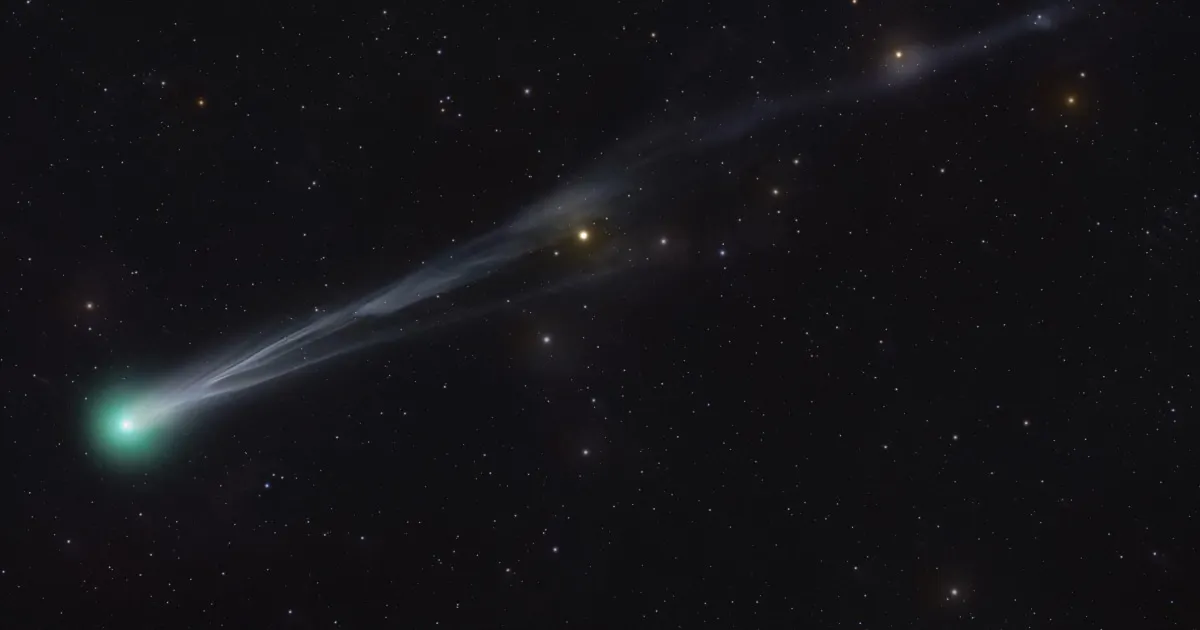
This fall, two greenish-hued comets are making their way through the inner solar system, providing a rare opportunity for stargazers to witness their celestial beauty in the coming weeks. The comets, designated as C/2025 A6 (Lemmon) and C/2025 R2 (SWAN), are currently visible from the Northern Hemisphere as they traverse our cosmic neighborhood on their journey around the sun.
Comet appearances are always a thrilling event for astronomy enthusiasts, and seeing two comets in the same month is a particularly rare phenomenon. Both comets are observable with binoculars or small telescopes, and they will remain visible until the end of October. Notably, Comet Lemmon may even become visible to the naked eye as it approaches its closest point to Earth and reaches its peak brightness on or around October 21.
Many skywatchers have already spotted these icy wanderers. Astrophotographer Julien De Winter, a junior lecturer at the University of Mons in Belgium, captured stunning images of Comet Lemmon in late September from Texas, showcasing its vibrant emerald glow and elongated tail. The comet's faint green color is attributed to the presence of carbon in the gas cloud surrounding its nucleus.
According to EarthSky, a trusted resource for skywatching and astronomy, Comet Lemmon will be visible in the Northern Hemisphere from now until mid-October, near the Big Dipper constellation in the pre-dawn hours. Stargazers are advised to look northeast in the sky, slightly below the distinct grouping of stars that form the bowl and handle of the Big Dipper. In about a week, Comet Lemmon will transition to the evening sky, rising in the west.
Meanwhile, Comet SWAN can be observed in the evening sky through the end of October. The optimal time to spot this comet will be roughly 90 minutes after sunset, facing southwest. Although it may not be bright enough to see with the naked eye, binoculars or a small telescope will enhance the viewing experience. As the days progress, Comet SWAN will continue to rise higher on the horizon after sunset and may brighten as it approaches its closest point to Earth around October 20.
Under ideal conditions—clear weather, dark skies, and minimal light pollution—it's possible that stargazers might catch a glimpse of both comets on the same night toward the end of the month. The excitement surrounding these celestial events serves as a reminder of the beauty and wonder of our universe.
Comet Lemmon was discovered in January by the Mount Lemmon Survey, which monitors near-Earth objects using telescopes situated in the Santa Catalina Mountains of Arizona. On the other hand, Comet SWAN was identified even more recently when an amateur astronomer noticed it in early September while analyzing images from the SWAN instrument on NASA's Solar & Heliospheric Observatory, a mission dedicated to studying the sun since its launch in 1995.
As these two comets continue their journey, they offer a unique opportunity for astronomical observation and appreciation. Be sure to mark your calendars and prepare your binoculars or telescopes for a chance to witness these spectacular cosmic visitors!